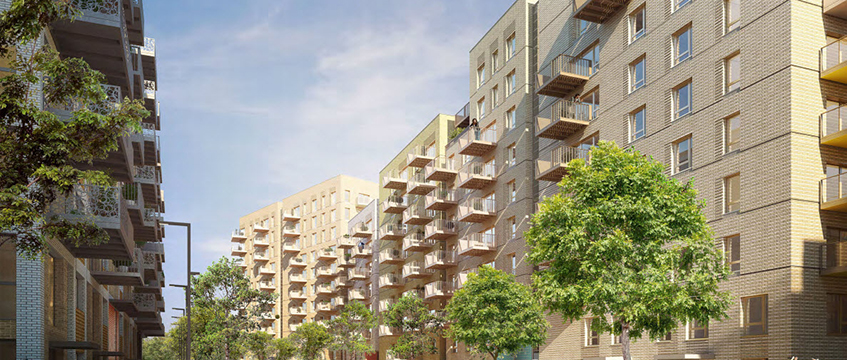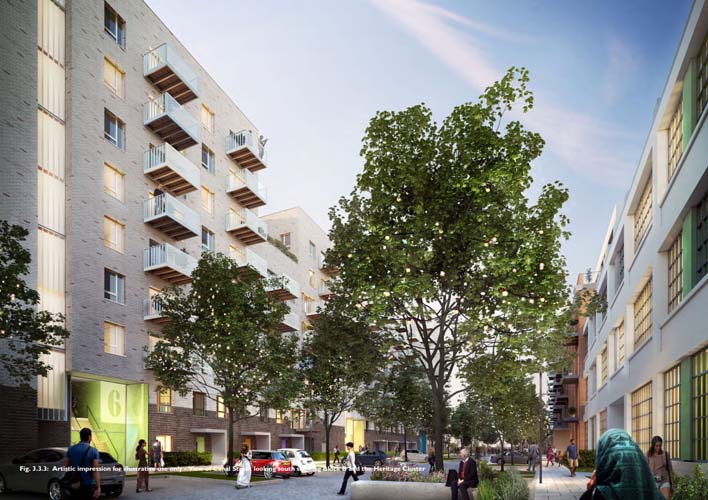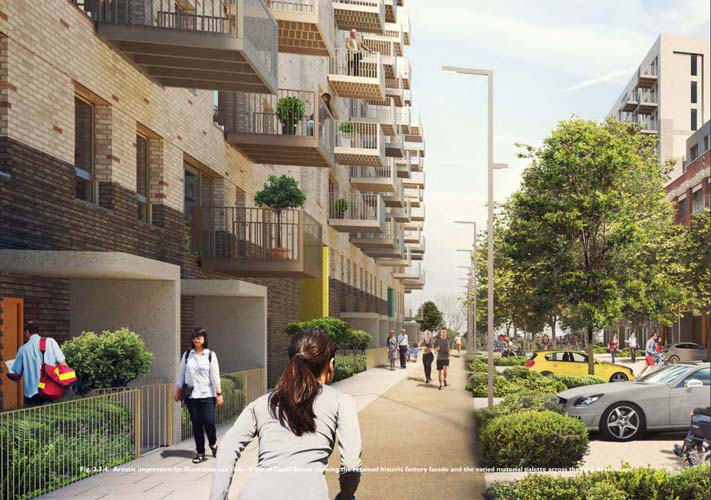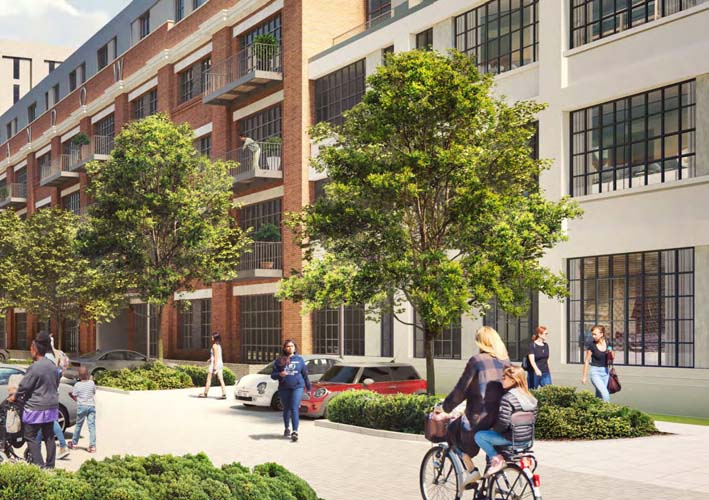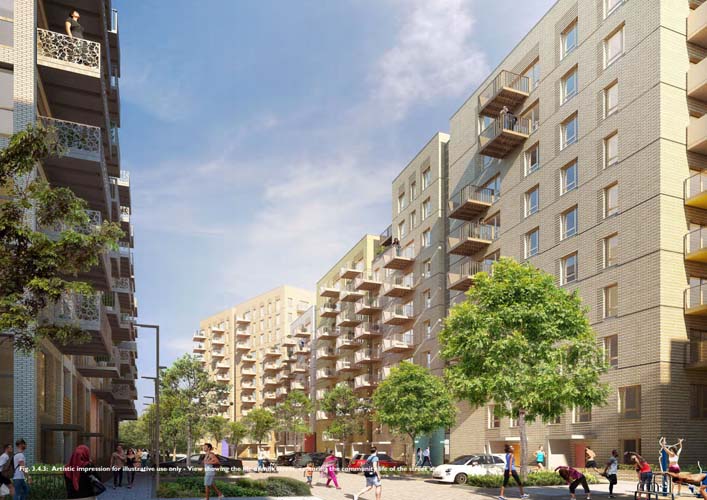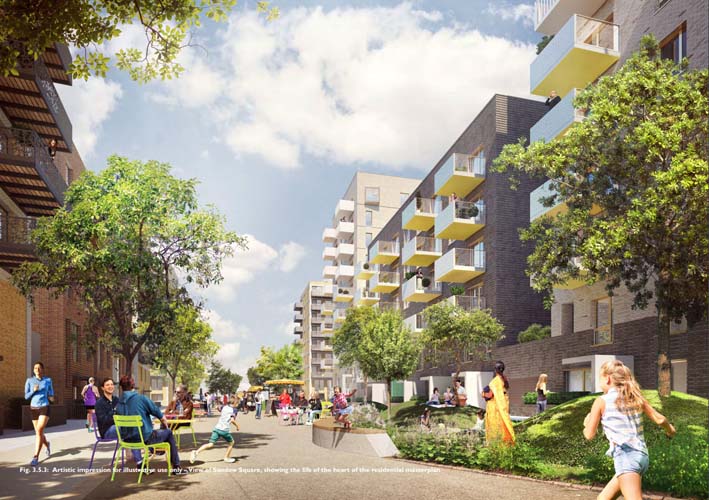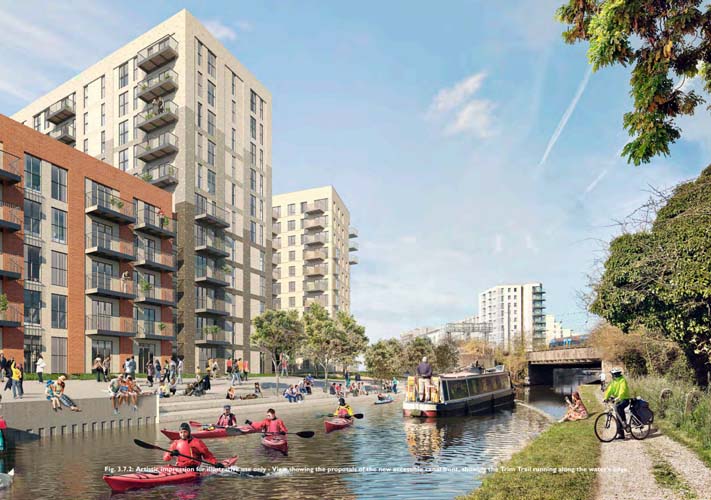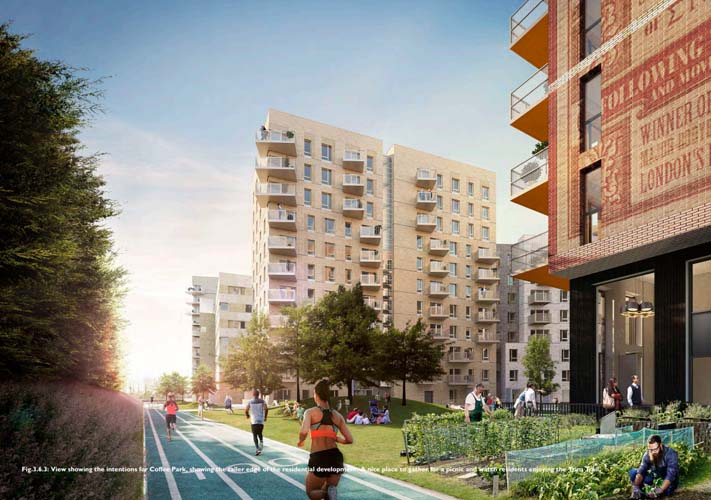SEGRO and Barratt have submitted a major application for 1,381 homes as well as 245,000 sq ft of industrial space on the former Nestlé factory site in Hayes, west London.
SEGRO acquired the site unconditionally in 2015 for £50m. Once planning is in place, it will sell 18 acres of the 30 acre site to Barratt.
The residential element will be built out across six plots, with planning documents suggesting the three of these, making up 661 homes, will all start simultaneously in 2018. Detailed planning has been submitted for all six residential phases as well as the industrial space.
Normally, a return on capital house builder such as Barratt wouldn’t start on three phases at once, due to absorption rate. This could lead to speculation that the early phases could be sold to the rental market with potential build to rent operators developing at the same time as the housing for sale element.
Barratt were looking to sell phases to the rental market at the end of 2016 and the beginning of 2017.
However, it now says: “There is currently no proposal for any phase to be sold to the build to rent market. At the point that planning permission is granted, Barratt London will explore potential for all housing types within the private tenure, to ensure that a sustainable mix is brought forward to meet local requirements.”
With development land across London at a premium, both residential and industrial developers are fighting to land their hands on sites, competition that house builders usually win.
A recent Colliers report revealed the supply of industrial floor space in London is currently just 6.1m sq ft, allowing for just eight months’ supply, the lowest level in the country. This level is also 60% down on 2010; while vacancy rates have fallen from 9% to just 3.5% over the same period.
Colliers also revealed that industrial space is most constrained in west London and around Heathrow, where there is less than six months’ worth of supply available as annual take-up hits 2.8m sq ft, and just 0.4m sq ft is under construction.
Amalgamating large sites and increasing density seems to be the only way to keep both the industrial and residential industry happy. “This scheme proves that both residential and industrial can co-exist very easily,” says Alan Holland, SEGRO’s director for Greater London.
As London’s population grows, so does its demand for goods and services, and with an increasing amount of the UK’s spend now online, more than 18% according to latest ONS figures, industrial land is desperately needed.
Barratt and SEGRO are also working in partnership at Enfield’s Meridian Water scheme. Here, the industrial developer is planning a four storey “multi-level’ industrial scheme on a site of around seven acres. To get the same amount of space on a single level site, SEGRO says 22 acres would need to be required.
To send feedback e-mail paul.wellman@egi.co.uk or tweet @paulwellman eg or @estatesgazette







